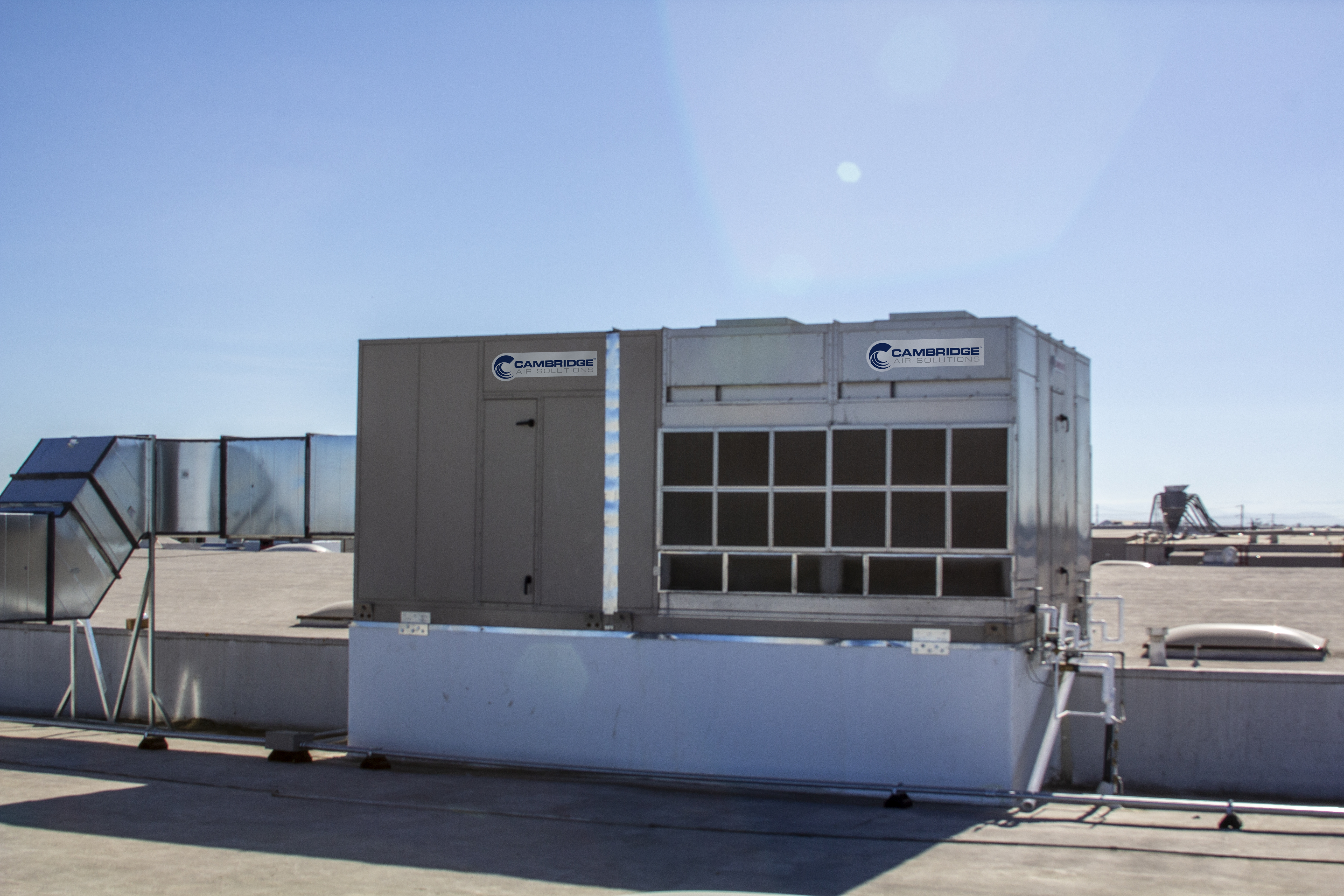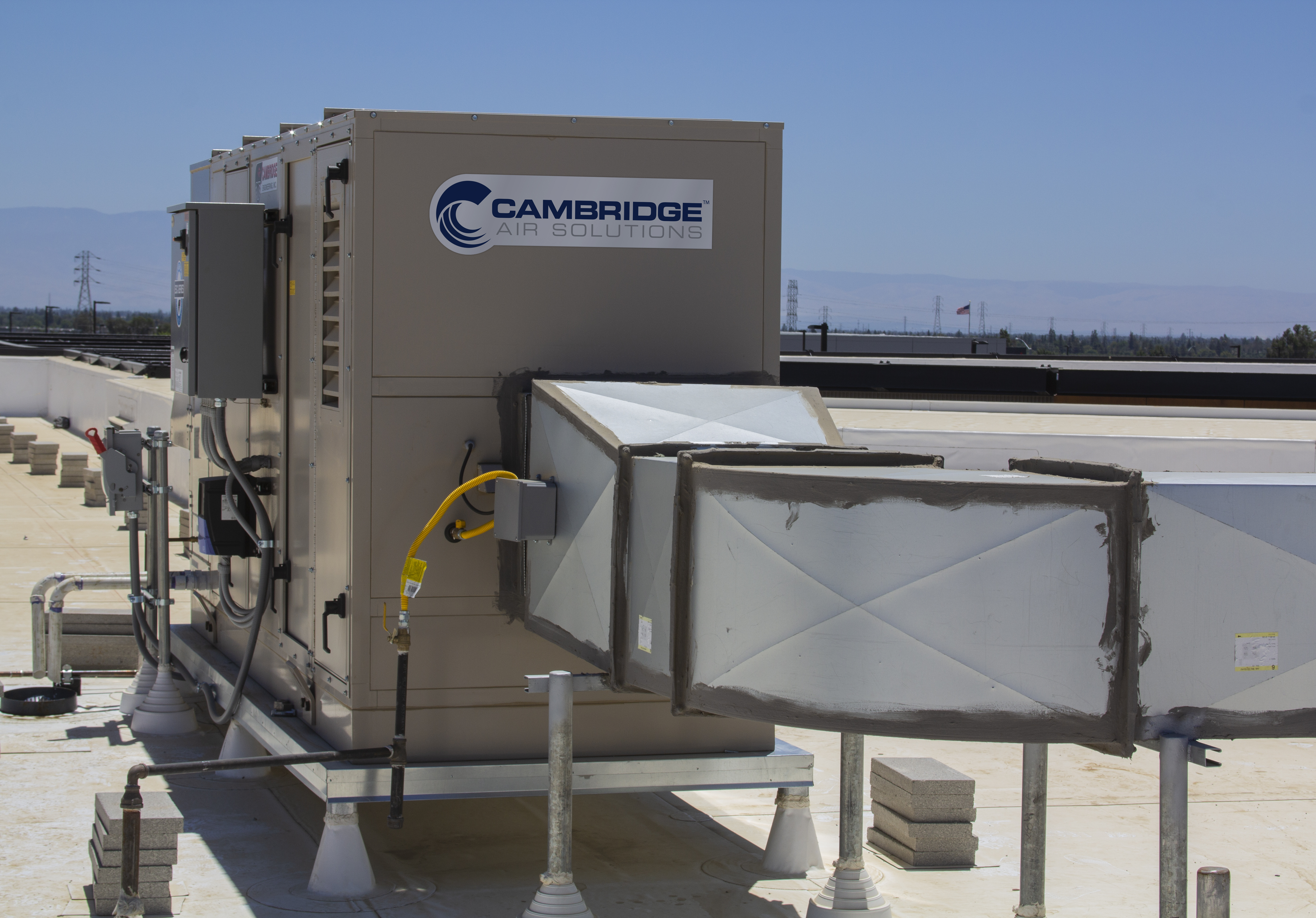Southern California Utility Company Enhances Indoor Air Quality and Reduces Carbon Footprint with Cambridge Air Solutions
As the nation’s largest natural gas distribution utility, SoCalGas is committed to delivering clean, safe, and reliable energy to 21.8 million consumers through 5.9 million meters in more than 500 communities. Their service territory spans approximately 24,000 square miles across Central and Southern California, from Visalia to the Mexican border.
For over 150 years, SoCalGas has been an environmental leader, employer, and neighbor, striving to improve the quality of life in their communities. They uphold these values by maintaining a diverse workforce, partnering with suppliers that reflect the communities they serve, and giving back through charitable contributions and employee volunteer programs.
Beyond their commitment to the community, SoCalGas also prioritizes the well-being of their associates. When designing their new facility in Bakersfield, CA, they sought a small CFM make-up air solution that would provide energy-efficient cooling in the summer and warmth in the winter. To achieve this, they selected Cambridge Air Solutions’ ESC-Series, featuring indirect evaporative technology combined with an indirect-fired heating section.
The ESC-Series’ indirect evaporative cooling technology delivers a temperature depression of 21°F during the hot Southern California summers. When outdoor temperatures reach 102°F, the system supplies a “leaving-air” temperature of 81°F—more than enough to maintain a comfortable indoor working environment. Additionally, the ESC-Series unit includes a variable frequency drive, allowing SoCalGas to adjust the system to match their exhaust load efficiently.
Cambridge’s ESC-Series is a semi-custom fabricated air handler that integrates indirect, direct, or a combination of both evaporative cooling methods to meet specific facility needs. Utilizing 100% outside air, the system provides tempered make-up air and building cooling. With 12 models ranging from 2,400 to 56,000 CFM, the ESC-Series is ideal for industrial, commercial, and institutional buildings looking to enhance indoor air quality without the high costs of mechanical cooling.
Sustainability and Carbon Savings
| |
CEI Cooling System |
Packaged RTU |
| System |
Evaporative Cooling |
Vapor Compression |
| Cooling Type |
Indirect |
DX |
| Model |
ESC4L |
|
| CFM |
2420 |
2420 |
| Capacity (MBH) |
53 |
53 |
| Capacity (Tons) |
4.40 |
4.4 |
| Hrs of Operation |
4000 |
4000 |
| Evap Cooling Effectiveness |
65.5 |
|
| DX Cooling Efficiency (EER) |
|
10.5 |
| Evap Pump Power Consumption (kWh) |
12706 |
|
| DX Compressor Power Consumption (kWh) |
|
20190 |
| Electrical Cost ($/kWh) |
$0.12 |
$0.12 |
| Cooling Op Cost |
$1,524.72 |
$2,422.86 |
| Percent Savings |
37% |
|
Estimated kWh Savings by using EVAP over DX = 7484 kWh
Pounds of C02 Emissions Avoided = 8322 lbs
In addition to providing superior indoor air quality, the ESC-Series significantly reduces energy consumption and carbon emissions. A comparative analysis against competitive cooling technology revealed substantial environmental benefits:
- Energy Savings: The ESC-Series saves 7,484 kWh annually compared to DX cooling systems.
- CO2 Emissions Reduction: By choosing evaporative cooling over traditional DX systems, SoCalGas avoids emitting 8,322 lbs of CO2 each year.
To put this into perspective, the CO2 emissions saved are equivalent to:
- 9,612 miles driven by an average gasoline-powered passenger vehicle
- 5.5 electric vehicles driven for a year
- 425 gallons of gasoline consumed
- 4,193 pounds of coal burned
- 406,508 smartphone charges
By implementing the Cambridge ESC-Series, SoCalGas has not only improved indoor air quality and employee comfort but also made a significant impact on sustainability. Their proactive approach to energy efficiency and emissions reduction showcases their leadership in environmental responsibility while reinforcing their commitment to a better future for both their workforce and the communities they serve.
Industrial applications for the ESC-Series (indirect evaporative cooling) include:
- Warehouse/Distribution
- Aviation
- Sports Arenas
- Greenhouses
- Agriculture
- Call Centers
- Food Processing Plants
- Manufacturing
- Health Care/Labs
- Waste Water Treatment
- Foundries
- Data Centers
- Institutions/Prisons
- Schools

